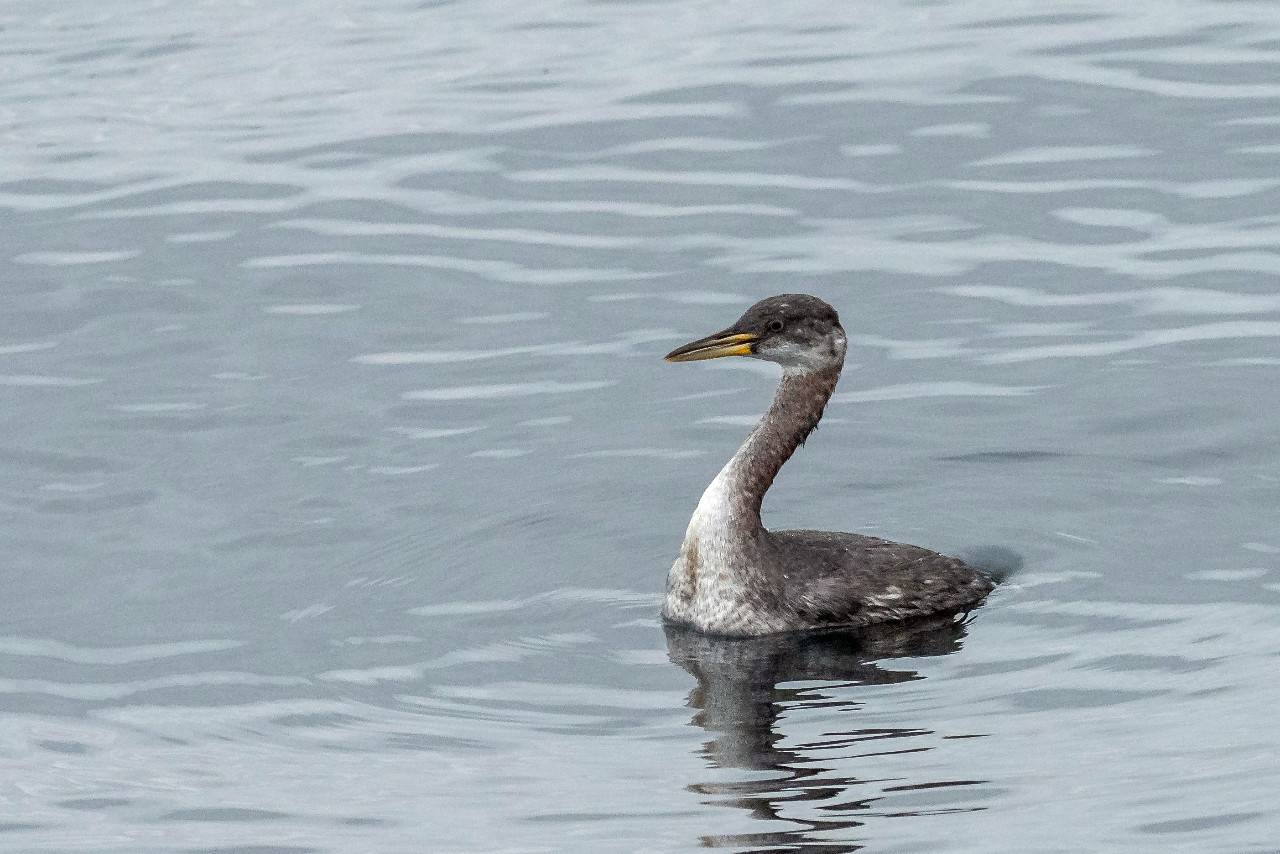By Dianna Moore
Grays Harbor Audubon
As usual, I am featuring a bird that we see in mostly non-breeding plumage, so you probably won’t see one with a red neck, but this fairly plain grayish-brown bird is what we would expect to see this time of year.
General Description: This winter-plumaged grebe is fairly common to the Harbor, with its large yellow bill, long neck, and black cap gracing our saltwater locations. It is duck-sized, with both sexes measuring 17 to 22 inches in length, with wingspans of 24 to 35 inches, and weighing about 28 to 56 ounces. Breeding birds have dark bodies, red necks, white cheeks and dark crown. All birds have dark eyes, not red.
Habitat: In winter, Red-necked Grebes are found on salt water, mostly protected bays, marshes and along the coast, but they can be found far offshore too. During the summer they move to fresh water ponds. lakes, sloughs, and reservoirs with stable water levels and emergent vegetation on which to anchor their floating nests.
Behavior: Unlike the Atlantic coast birds, the Red-necked Grebes that winter in Washington are solitary birds, so you won’t see large rafts of them anywhere near here. During breeding season they are found in noisy, active pairs, each pair involved in very elaborate rituals.
Diet: Small fish are the mainstay of the winter diet, with insects added as an important food source during the summer breeding season.
Nesting: Both male and female build a floating nest in shallow fresh water anchored to emergent vegetation. The female typically lays two to four eggs. Nests with a lot of eggs are due to another bird laying eggs in the same nest. The young are able to swim shortly after hatching but often ride the backs of their parents. Both parents tend the young.
Migration: Red-necked Grebes are short-distance migrators between fresh and saltwater and migrate over land by night and over coastlines by day. In the fall they stop over at molt sites where they molt new feathers before continuing on to their wintering grounds. They arrive on their breeding grounds in April and leave in September.
Conservation Status: Not enough is known about these birds to say whether they are doing well or not, but they are very sensitive to disturbance during nesting, and water levels are very important to their breeding habits. A positive note is these birds readily accept artificial wetlands.
When and Where to Find on Grays Harbor: Red-necked Grebes are considered fairly common to the coastal areas here on the harbor during September through April. I have seen them in the area between Damon Point in Ocean Shores and Westport Marina. Look for that big yellow bill!



